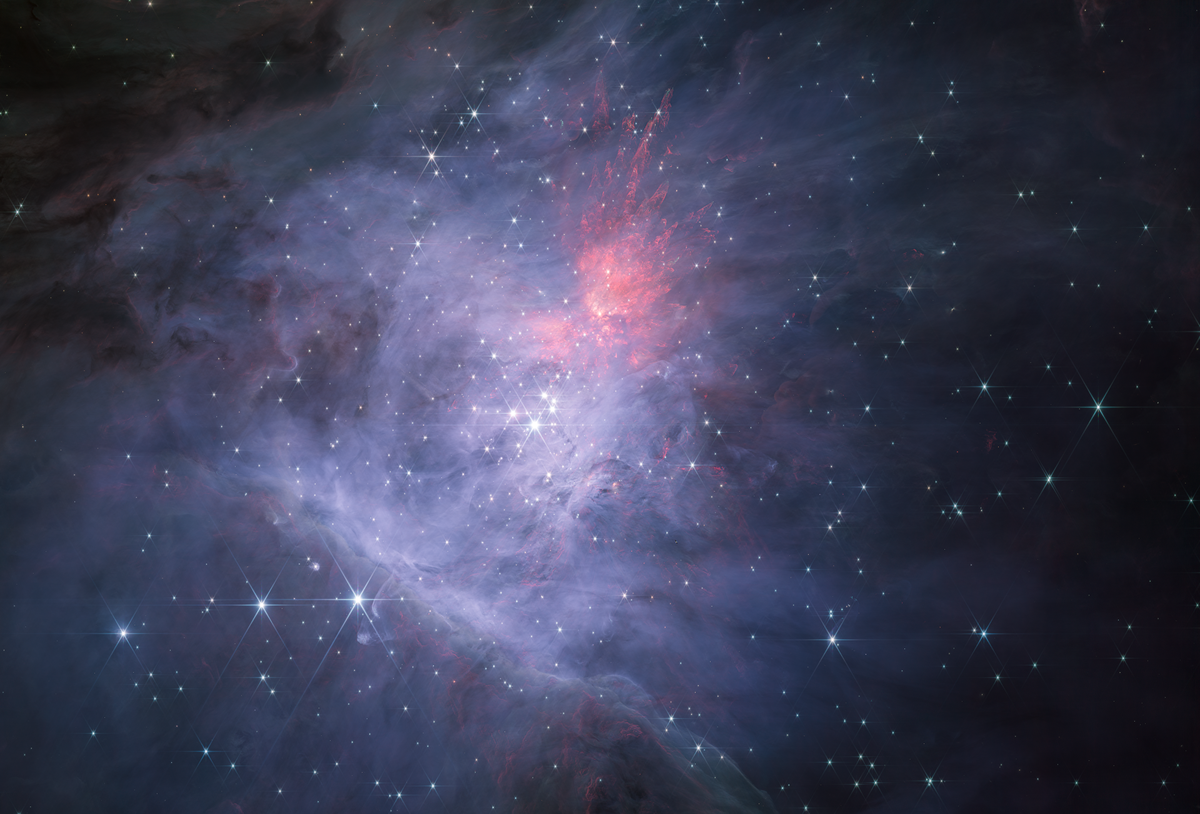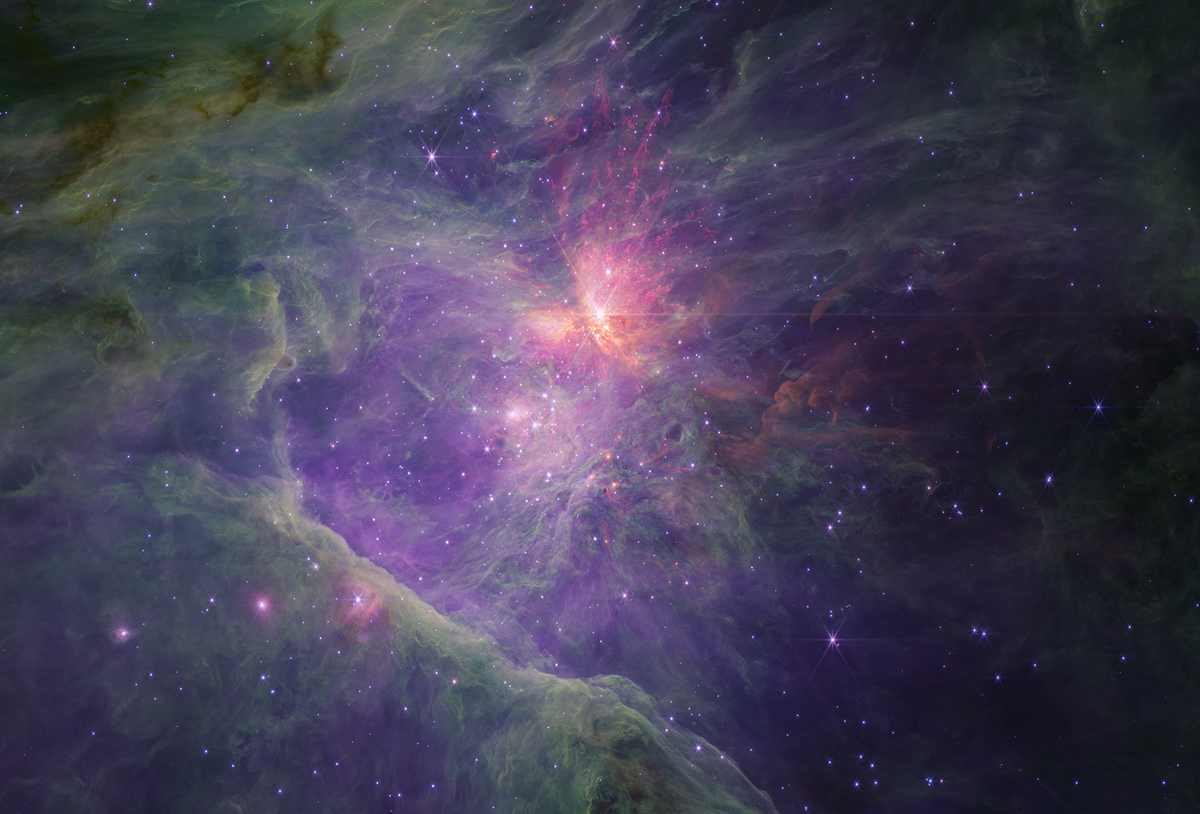By Keith Cooper published about 3 hours ago
The observations have uncovered 40 pairs of free-floating gas giants.

This new image from the James Webb Space Telescope's NIRCam short-wavelength channel shows the Orion nebula, its stars, and many other objects in unprecedent high definition in the near infrared. (Image credit: NASA, ESA, CSA / Science leads and image processing: M. McCaughrean, S. Pearson, CC BY-SA 3.0 IGO)
The James Webb Space Telescope has captured two stunning wide-field mosaics of the grandiose Orion Nebula, a large region of star formation that's one of the closest stellar nurseries to the solar system. It sits just 1,344 light-years away.
The huge mosaics, made of over 3,000 individual images, have also been added to the European Space Agency's ESASky app, which is an interactive all-sky map with a user-friendly interface that enables members of the public to view amazing images of the universe taken by the likes of the James Webb Space Telescope (JWST) and the Hubble Space Telescope.
The Orion Nebula is rife with budding stars located inside its billowing clouds of molecular gas. Some 2,800 young stars are known to exist inside the nebula, with many more stellar embryos cocooned within the area's dense veil of gas and dust. And the JWST’s Near Infrared Camera, known as NIRCam for short, is able to peer through much of this gas and dust — doing so has revealed proto-stellar disks, outflows from burgeoning stars, and even free-floating planets.

This second view from Webb's NIRCam long-wavelength channel reveals the gas, dust and molecules with unprecedented sensitivity in infrared, but at lower spatial resolution than in the short-wavelength image. (Image credit: NASA, ESA, CSA / Science leads and image processing: M. McCaughrean, S. Pearson, CC BY-SA 3.0 IGO)
On a winter's night, the nebula is visible to the unaided eye as a fuzzy object just below the three stars that make up the Belt of the Orion constellation. The nebula is illuminated by the Trapezium Cluster, which is a grouping of young stars so-named after the pattern of their four most prominent members. Each star in this quartet is massive, with between 15 and 30 times the mass of our Sun. Their short lives, spanning just a few millions of years rather than billions, will end in supernova explosions.
More:
https://www.space.com/james-webb-space-telescope-rogue-planets-stars-forming

